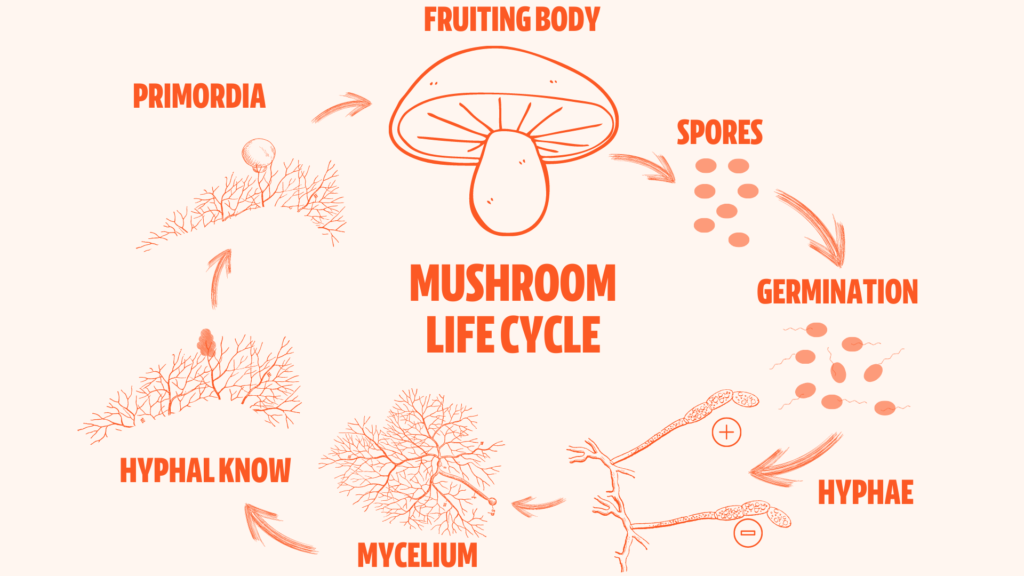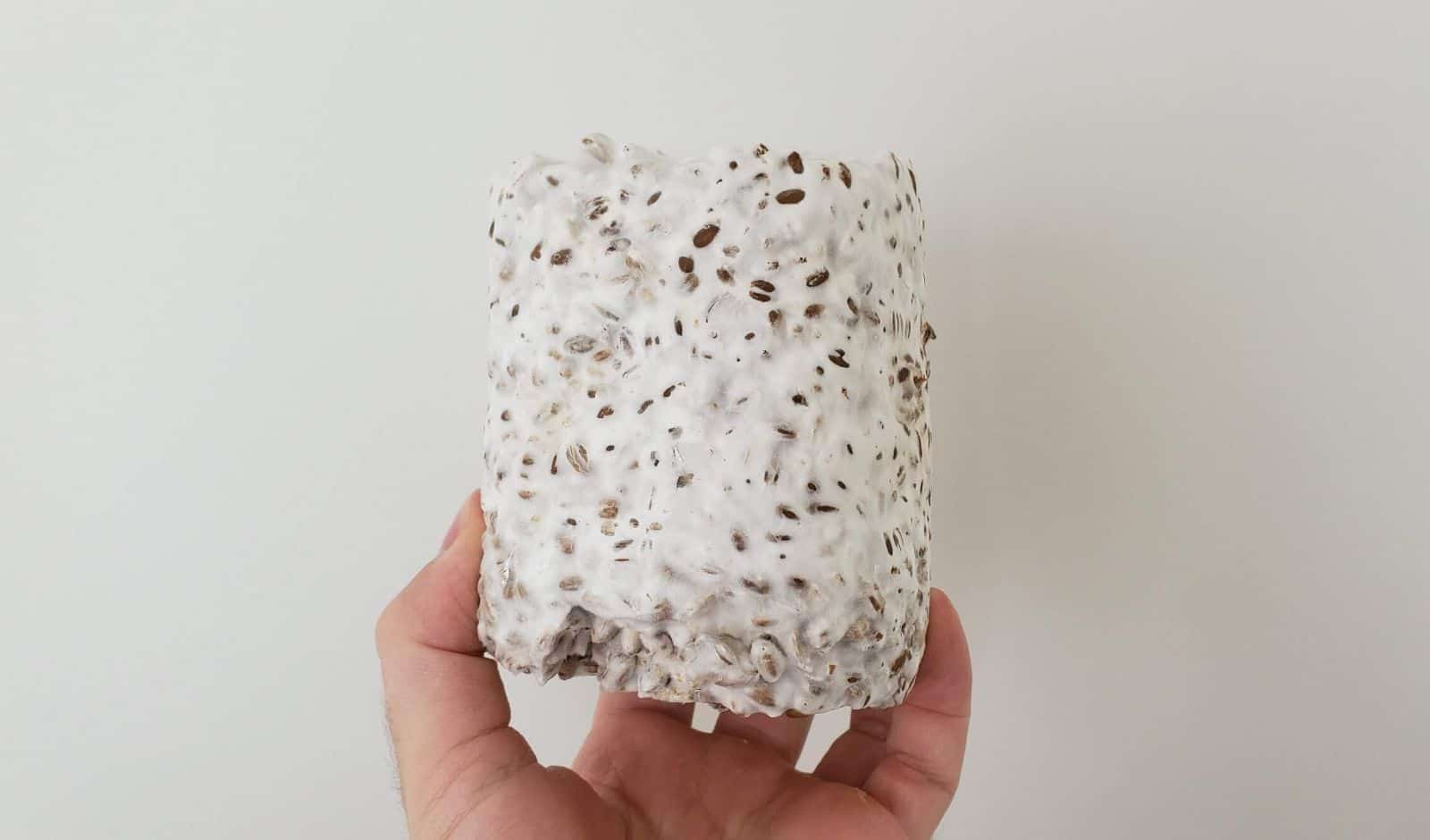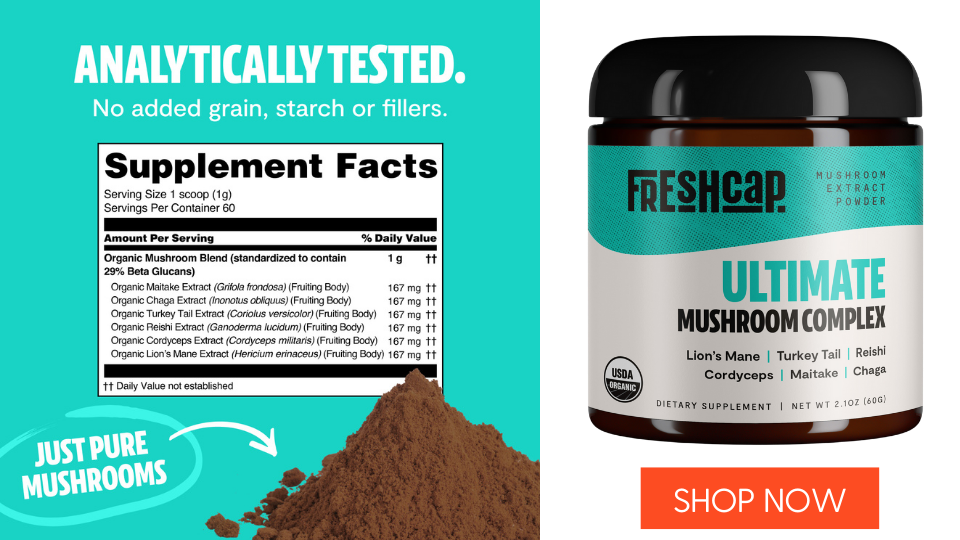What Is Myceliated Grain or Mycelial Biomass?
Have you ever actually read the nutrition facts on the back of your mushroom supplement?
If not, I totally recommend you take a look!
Of course, if your supplement is made from actual mushrooms, then you won’t find anything too surprising.
The species of mushroom will be listed, along with the amount in each serving. You might also see the “beta-D-glucan” content, or the level of active compounds verified to be in the extract.
On some supplements however, they’ll list terms like “myceliated grain”, “mycelial biomass’, “cultured oats”, or even “freeze-dried myceliated brown rice”.
Unless you’re a budding mycologist, you might not understand what these other ingredients entail.
“Wait…other ingredients? Aren’t mushrooms just mushrooms?”
As we’ll see, the answer is actually a little more complicated.
The Mushroom Life Cycle
To fully understand the term “myceliated grain”, you first need to understand a tiny bit about how mushrooms grow. (feel like you’re back in BIO 101 yet? 😄)
Let’s take a look at the typical “Mushroom Life Cycle”.

A mushroom “fruitbody” disperses spores, which germinate to form a web of “mycelium”.
Eventually, the mycelium clumps together and forms knots. Under the right conditions, these knots turn into what most people would call a mushroom.
The new fruit-body can then disperse spores and start the process all over again.
When a mushroom is produced on a farm, expert growers will try and mimic this natural process.
Instead of starting from spores however, they’ll start with a chunk of mycelium, also known as a culture.
They add the mycelium to a type of sterilized grain which could be rye, oat, rice, sorghum, millet, or a whole array of other suitable grains. (even popcorn works!)
This grows throughout this grain, wrapping each kernal in a web of white cottony mycelium.
Once it fully covers the grain, it is known as “grain spawn”.
So… how do you actually grow mushrooms?
Grain spawn is used to “seed” another growing medium – typically hardwood. It continues to grow- and under the right conditions, will eventually fruit mushrooms.
Growing mushrooms is a long and intricate process. But it’s totally worth it!
Mycelium on Grain Supplements (M.O.G.)
Grain spawn is just an intermediary step in the mushroom growing process.
In fact, FreshCap used to sell grain spawn to hobby growers who want to try growing mushrooms at home!
But why would some manufacturers use grain spawn as a supplement?
It likely comes down to cost.
It’s much cheaper, and much less complicated, to simply produce “myceliated grain” or “mycelial biomass” without actually ever fruiting the mushroom.
Unlike creating grain spawn, producing whole fruiting body mushrooms requires large grow rooms with tightly controlled environmental conditions.
Although pure mycelium definitely does have some functional benefits, M.O.G. supplements also contain an extremely high percentage of grain starch in the final product.
This is because mycelium isn’t 100% efficient in breaking down the grain before it is processed into a supplement.
This is the same reason why you’ll sometimes see a high “poly-saccharide” content on the label for M.O.G. products. It’s due to the alpha-glucan in the grain, not the beta-glucan from the mushroom.
The problem here is that much of the research on medicinal mushrooms is based on fungal beta-glucans as the active component, not alpha-glucans or poly-saccharides in general.
Pure Mycelium Supplements
Grain isn’t the only way to grow mycelium.
There exists a process of propagating mycelium known as “liquid culture“, in which mycelium is grown in large fermentation tanks.
The cultured mycelium can then be strained out of solution and dried or extracted to be used in a supplement.
This can be an effective way experience the benefits of mushrooms, since pure mycelium does contain active compounds for certain species,
A good example of this is a strain of Cordyceps, known as CS-4, or Cordyceps sinensis-4.
Cordyceps sinensis is an incredibly powerful medicinal mushroom…. but is also extremely rare and so far has been impossible to cultivate (unlike our Cordyceps militaris).
Because of this, the fruiting body is prohibitively expensive. Luckily, one strain known as CS-4 can be grown in liquid culture, and research is showing that the mycelium has beneficial properties very similar to actual sinensis fruiting body.
The benefit of liquid fermentation over myceliated grain is that the final product is pure mycelium and does not contain high-starch fillers.
Fruiting Body Supplements
These are mushroom supplements actually made from mushrooms.
The whole fruiting body is grown and harvested, processed by hot water or alcohol extraction, and then spray dried into a fine powder.
The benefit of whole fruiting body supplements is that the level of active compounds are actually present at significant levels.
These fungal beta glucans can easily be tested for, which is why fruiting body supplements will often list the percentage of beta-glucan on the nutrition facts panel.
What Works For You?
At the end of the day, it’s the efficacy of the product that matters.
We all take medicinal mushrooms for different reasons. Some use mushrooms for specific illnesses, and others just use it for immune support and to help feel amazing everyday.
Your primary concern should be whether or not your product is safe, ethically produced and from a trusted source.
As long as that holds true, if a product works for you, does it really matter how it’s produced
At FreshCap, we use pure fruiting body mushroom extracts, and find them to be the highest quality choice for getting mushrooms in your life. Our selection features a range of convenient formats, including easy-to-swallow capsules, delightful gummies, and versatile powder mixes to suit your preferences. But in the end, it’s up to you to decide what type of supplement product best fits your needs.




Hi Tony,
I’ve watched your video on creating mycelium from wild mushrooms in a petri dish. I also watched a video on youtube of a guy slicing tissue from the inside of an oyster mushroom and creating mycelium in an empty plastic tray with a lid. He sterilized everything and placed the oyster mushroom tissue culture inside some layers of sterilized cardboard and placed inside the tray. Similar to your agar culture. Can your technique be used to tissue culture lions main? or Turkey tail? or from most any mushrooms fruiting body?